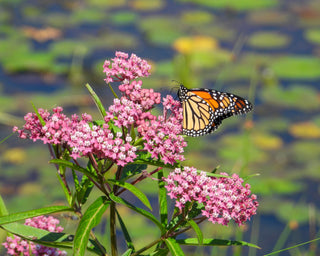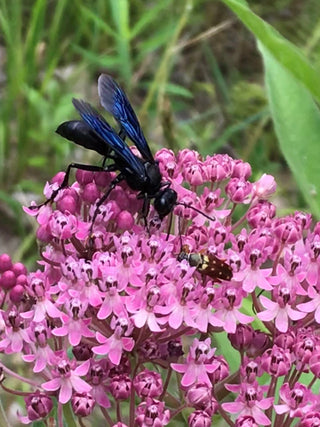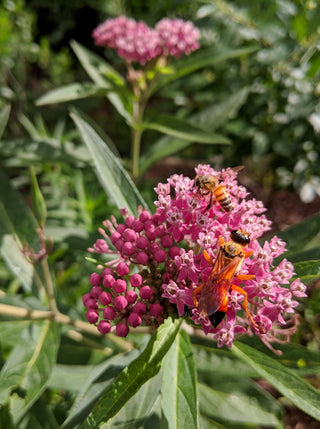Rose Milkweed - Asclepias incarnata
SKU: BPQ100
Regular price
- Unit price
- /per
Quantity selected exceeds current stock
Phonetic: as-KLEE-pee-as in-kar-NAH-tuh
Rose Milkweed is an exceptional plant for pollinators, attracting Hawk moths, Swallowtail butterflies, Fritillaries, Monarchs, skippers, bumble bees and numerous other nectar seekers - even an occasional hummingbird. Monarch butterflies lay their eggs exclusively on plants in the Asclepias genus, otherwise known as milkweeds. This milkweed will thrive in average garden soil. The 3-5 foot plant forms a stately clump with upright stems, long narrow leaves and clusters of fragrant pink flowers - followed by attractive seed pods for late season interest. The pods split open when ripe releasing their silky-haired seeds to the wind.
- Hardiness Zone: 3-8
- Native Region: BONAP Map
- BONAP Map Key Color Guide: Map Color Key
- Sun Exposure: Full Sun to Partial Shade
- Flower Color: Pink
- Bloom Time: June, July
- Soil Type: Moist - Wet
- Mature Plant Size: 3-5'H, 2-3'W
- Plant Spacing: 2'
- Host Plant: Monarch and Queen Butterfly
- Attracts: Bees, Birds, Butterflies
- Advantages: Deer resistant, fragrant, tolerates clay soil
- Landscape Uses: Butterfly garden, cottage gardens, perennial borders, pond and stream edges, wet meadows
- Companion Plants: Blue Flag Iris, Cardinal Flower, Common Boneset, Great Blue Lobelia, New England Aster, Scarlet Bee Balm
- Deer Resistant
Post
Share
Pin it
Adding product to your cart



